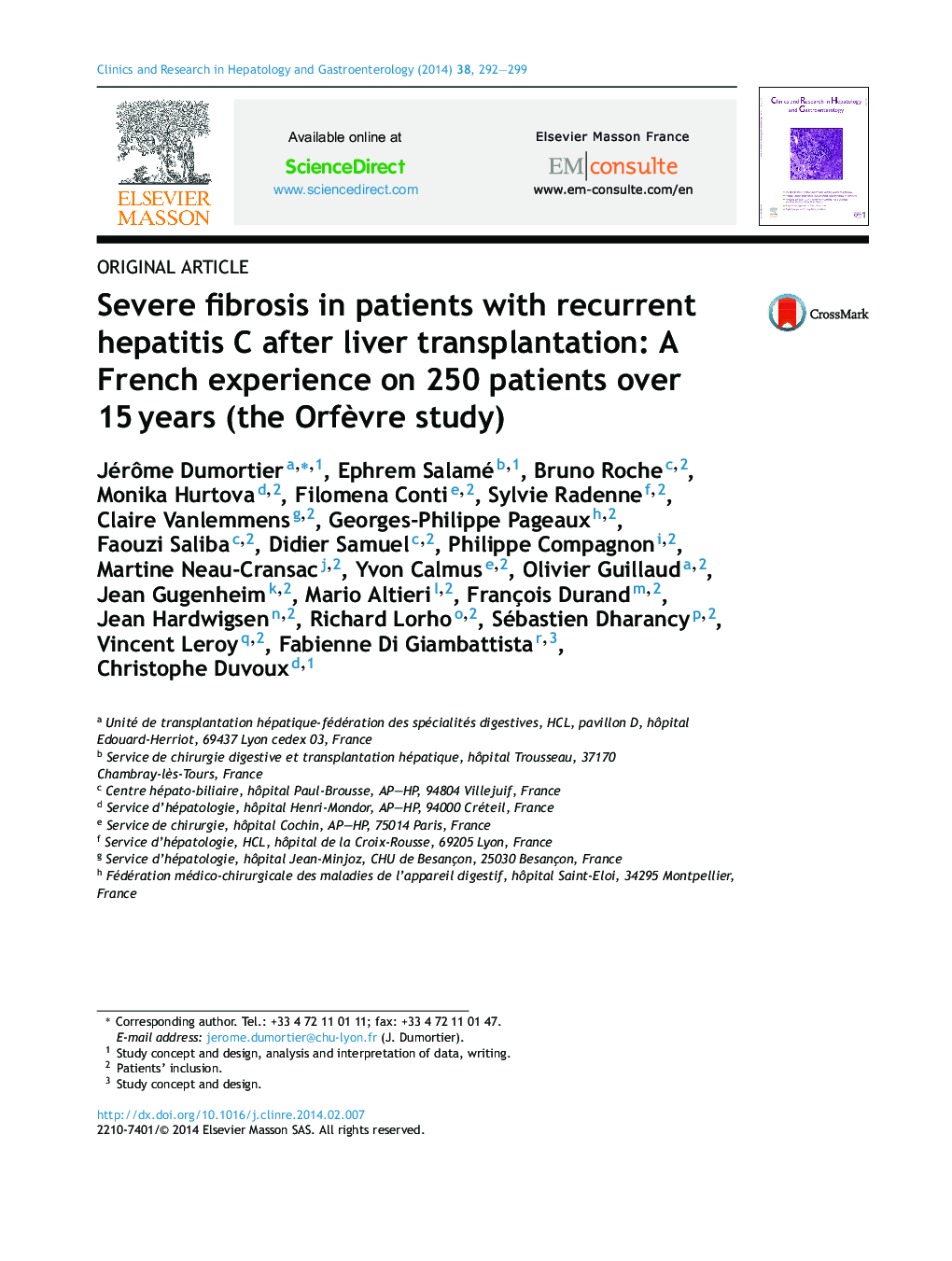| Article ID | Journal | Published Year | Pages | File Type |
|---|---|---|---|---|
| 3286573 | Clinics and Research in Hepatology and Gastroenterology | 2014 | 8 Pages |
SummaryBackground and aimsRecurrent hepatitis C after liver transplantation (LT) is associated with rapid fibrosis progression. The aim of this study was to evaluate the cumulative risk for severe fibrosis and the factors influencing it.Patients and methodsTwo hundred and fifty LT patients were included 1 to 15 years after LT. Recurrence of chronic hepatitis C on liver graft was classified according to Metavir score.ResultsKaplan-Meyer estimates for actuarial progression to severe fibrosis (Metavir > F3) showed a probability of 15.2% and 44.5% at 5 and 10 years, respectively. Predictive factors for progression to severe fibrosis were: use of tacrolimus as main CNI, recipient age at time of biopsy < 55, donor age ≥ 45, graft HCV re-infection < 3 months, biologically suspected graft re-infection and lack of response to antiviral treatment after LT. Multivariate analysis disclosed that only donor age ≥ 45 (hazard ratio 2.243, 95%CI 1.264–3.983, P = 0.0058) and lack of response to antiviral treatment (hazard ratio 2.816, 95%CI 1.227–6.464, P = 0.0146) were associated to severe fibrosis.ConclusionsOur study confirms that donor age ≥ 45 and lack of response to antiviral treatment after LT are major predictive factors of progression of HCV recurrence on liver graft.
